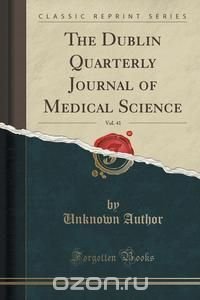Excerpt from The Dublin Quarterly Journal of Medical Science, Vol. 41
This consideration in some measure induces me to note and remark on the following cases which came under my own care during the last year, and which proceeded to a successful termination. A certain amount of interest, it may be presumed, attaches to the subject, inasmuch as eminent medical men of the present day are differing widely in opinion as to whether lithotrity has any advantage or superiority over the operation of cutting for the stone.
They hold, also, very opposite views respecting the proper mode of performing the crushing operation in its various stages. And yet, perhaps, this should not be wondered at when we bear in mind that lithotrity may be said to have been in its infancy not many years ago. But no operative procedure has been more improved upon of late, owing to the ingenuity of mechanical contrivances, and the practical hints of scientific surgeons. The clumsy appliances of forty years ago are now only shown in order to contrast them with the superior instruments of the present day; and it is satisfactory to know that some of the apparatus of the greatest utility to both patient and surgeon have been devised in this country. The name of Mr. L'Estrange at once occurs to me in this connexion, as one to whom the surgical profession will acknowledge they arc deeply indebted for many valuable instrumental improvements. Mr. Oldham, formerly of the Bank of Ireland, has also in this way rendered important services. The aged sufferer can now have a stone in his bladder shattered by lighter and more manageable instruments, and is saved the danger of the formidable operation of lithotomy. In theory, nothing can be easier than breaking a calculus in the bladder, but the operating surgeon does not usually find it to be so when he comes to deal with such a case. Every minute detail, from the moment he measures the size of the stone, and endeavours to ascertain its composition, requires the utmost watchfulness, steadiness, and dexterity.
About the Publisher
Forgotten Books publishes hundreds of thousands of rare and classic books. Find more at www.forgottenbooks.com
This book is a reproduction of an important historical work. Forgotten Books uses state-of-the-art technology to digitally reconstruct the work, preserving the original format whilst repairing imperfections present in the aged copy. In rare cases, an imperfection in the original, such as a blemish or missing page, may be replicated in our edition. We do, however, repair the vast majority of imperfections successfully; any imperfections that remain are intentionally left to preserve the state of such historical works. Это и многое другое вы найдете в книге The Dublin Quarterly Journal of Medical Science, Vol. 41 (Classic Reprint)
